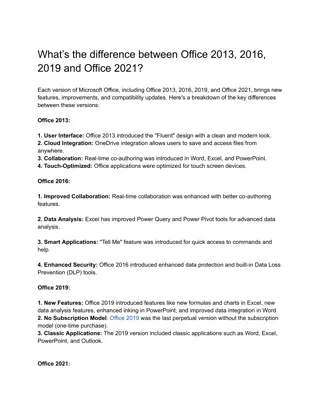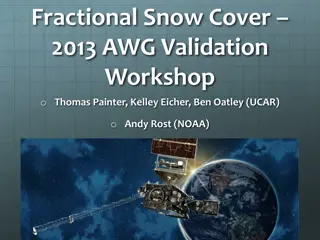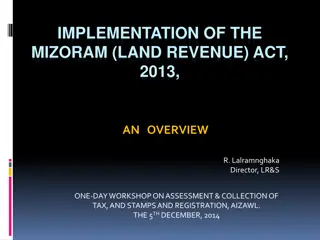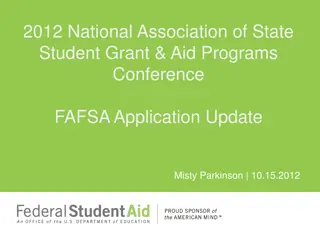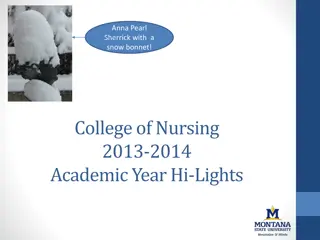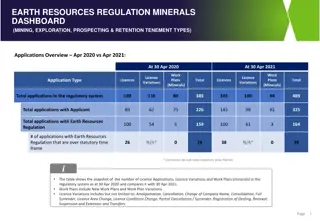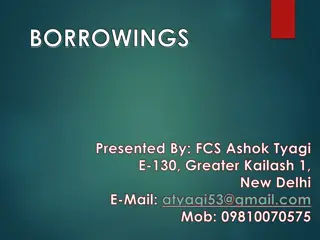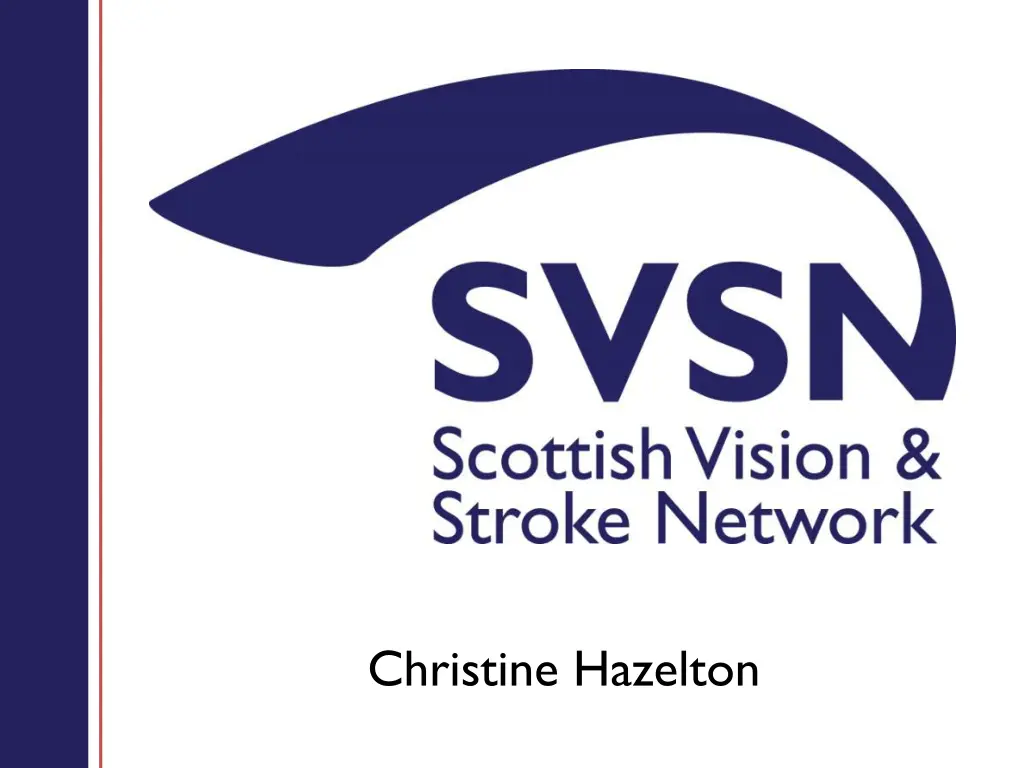
Visual Problems After Stroke: Scottish Network Insights
Explore vision issues post-stroke including visual field loss, eye movement disorders, and visual neglect. Dive into the impact on mobility, quality of life, and rehabilitation participation. Learn about the Scottish Vision & Stroke Network's collaborative efforts since 2009 to address these challenges.
Download Presentation

Please find below an Image/Link to download the presentation.
The content on the website is provided AS IS for your information and personal use only. It may not be sold, licensed, or shared on other websites without obtaining consent from the author. If you encounter any issues during the download, it is possible that the publisher has removed the file from their server.
You are allowed to download the files provided on this website for personal or commercial use, subject to the condition that they are used lawfully. All files are the property of their respective owners.
The content on the website is provided AS IS for your information and personal use only. It may not be sold, licensed, or shared on other websites without obtaining consent from the author.
E N D
Presentation Transcript
Contents 1. Vision problems after stroke 2. Scottish Vision & Stroke Network 3. SVSN Projects
Vision Problems Visual field loss Eye movement disorders Visual neglect
Visual Field Loss Prevalence: 20-57% Area affected: the same side of the visual field in both eyes Most common: homonymous hemianopia
Mobility Visual Field Defects Functional ability Reading Driving Falls Quality of Life Participation in Rehabilitation Social isolation Depression
Eye Movement Disorders Prevalence: 7 - 55% Main disorders: Difficulty in maintaining normal ocular position Difficulty with moving eyes appropriately
Eye Movement Disorders
Visual Neglect Prevalence: 8-90 % Definition: 'fails to report, respond, or orient to novel or meaningful stimuli presented to the side opposite a brain lesion Also called: spatial neglect, visuo-spatial neglect, visual inattention, hemi- inattention
Scottish Vision & Stroke Network formed in 2009 arose from concerns regarding the care of those with visual problems after stroke is a collaboration between stroke charities, vision charities, health care professionals, researchers and people affected by stroke
Representation British and Irish Orthoptic Society Chartered Society of Physiotherapists Chest Heart & Stroke Scotland College of Occupational Therapists Fife Society for the Blind NHS Scotland North East Sensory Services NMAHP Research Unit RNIB Scotland Scottish Council on Visual Impairment Scottish Stroke AHP Forum Scottish Stroke Nurses Forum The Stroke Association Visibility
Structure Network open membership charity reps eye care workers stroke care workers researchers service users Steering Group
Aims To improve awareness, diagnosis and treatment of visual problems after stroke within Scotland To support the research needed into effective assessments and treatments
1. Awareness Visual problems after stroke have a lower profile with stroke survivors, health care professionals and at policy and political levels.
1. Awareness gathering personal stories engaging with the Scottish Parliament developing an online information resource provided NHSInform with accurate information
2. Diagnosis & Treatment Significant inequalities exist in the assessment of visual function and in the management of visual problems across Scotland.
2. Diagnosis & Treatment Best Practice Statement Inclusion in Scottish & UK strategies Workshop to share and discuss current projects placements for trainee orthoptists
3. Research There is clinical uncertainty on referral pathways and the most effective treatments to use; research in the topic is scarce
3. Research Eye movement disorders workshop in September 2013 Research findings shared with clinicians and educators Opportunities to collaborate and network
4. Developing SVSN Defining network policies and structures Developing SVSN website
Funding Currently funded by SCOVI Covers administration and key running costs
Currently significant areas for improvement increasing awareness the importance of collaboration
THANK YOU Questions? Contact email - christine.hazelton@gcu.ac.uk



